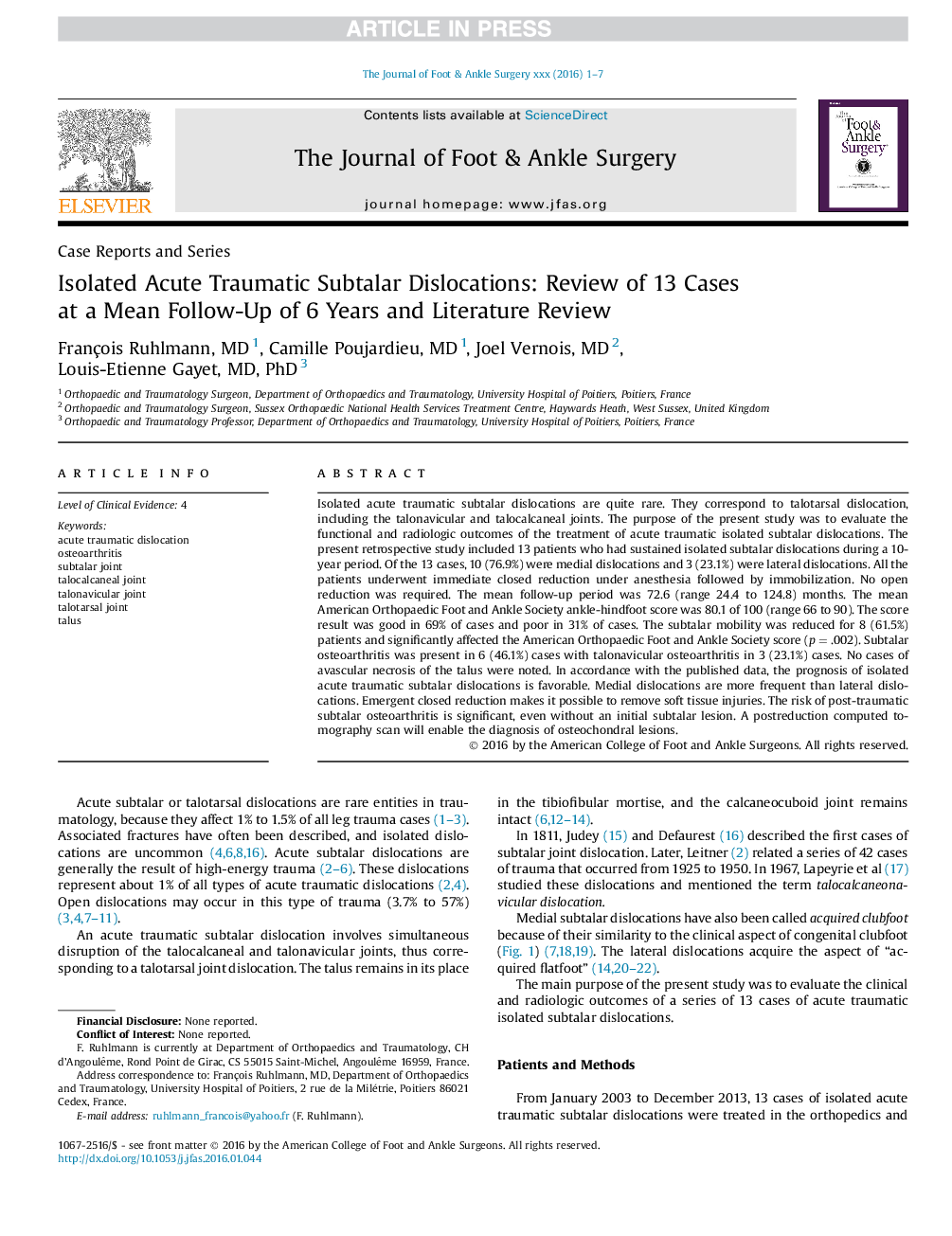| Article ID | Journal | Published Year | Pages | File Type |
|---|---|---|---|---|
| 5576211 | The Journal of Foot and Ankle Surgery | 2017 | 7 Pages |
Abstract
Isolated acute traumatic subtalar dislocations are quite rare. They correspond to talotarsal dislocation, including the talonavicular and talocalcaneal joints. The purpose of the present study was to evaluate the functional and radiologic outcomes of the treatment of acute traumatic isolated subtalar dislocations. The present retrospective study included 13 patients who had sustained isolated subtalar dislocations during a 10-year period. Of the 13 cases, 10 (76.9%) were medial dislocations and 3 (23.1%) were lateral dislocations. All the patients underwent immediate closed reduction under anesthesia followed by immobilization. No open reduction was required. The mean follow-up period was 72.6 (range 24.4 to 124.8) months. The mean American Orthopaedic Foot and Ankle Society ankle-hindfoot score was 80.1 of 100 (range 66 to 90). The score result was good in 69% of cases and poor in 31% of cases. The subtalar mobility was reduced for 8 (61.5%) patients and significantly affected the American Orthopaedic Foot and Ankle Society score (p = .002). Subtalar osteoarthritis was present in 6 (46.1%) cases with talonavicular osteoarthritis in 3 (23.1%) cases. No cases of avascular necrosis of the talus were noted. In accordance with the published data, the prognosis of isolated acute traumatic subtalar dislocations is favorable. Medial dislocations are more frequent than lateral dislocations. Emergent closed reduction makes it possible to remove soft tissue injuries. The risk of post-traumatic subtalar osteoarthritis is significant, even without an initial subtalar lesion. A postreduction computed tomography scan will enable the diagnosis of osteochondral lesions.
Related Topics
Health Sciences
Medicine and Dentistry
Orthopedics, Sports Medicine and Rehabilitation
Authors
François MD, Camille MD, Joel MD, Louis-Etienne MD, PhD,
